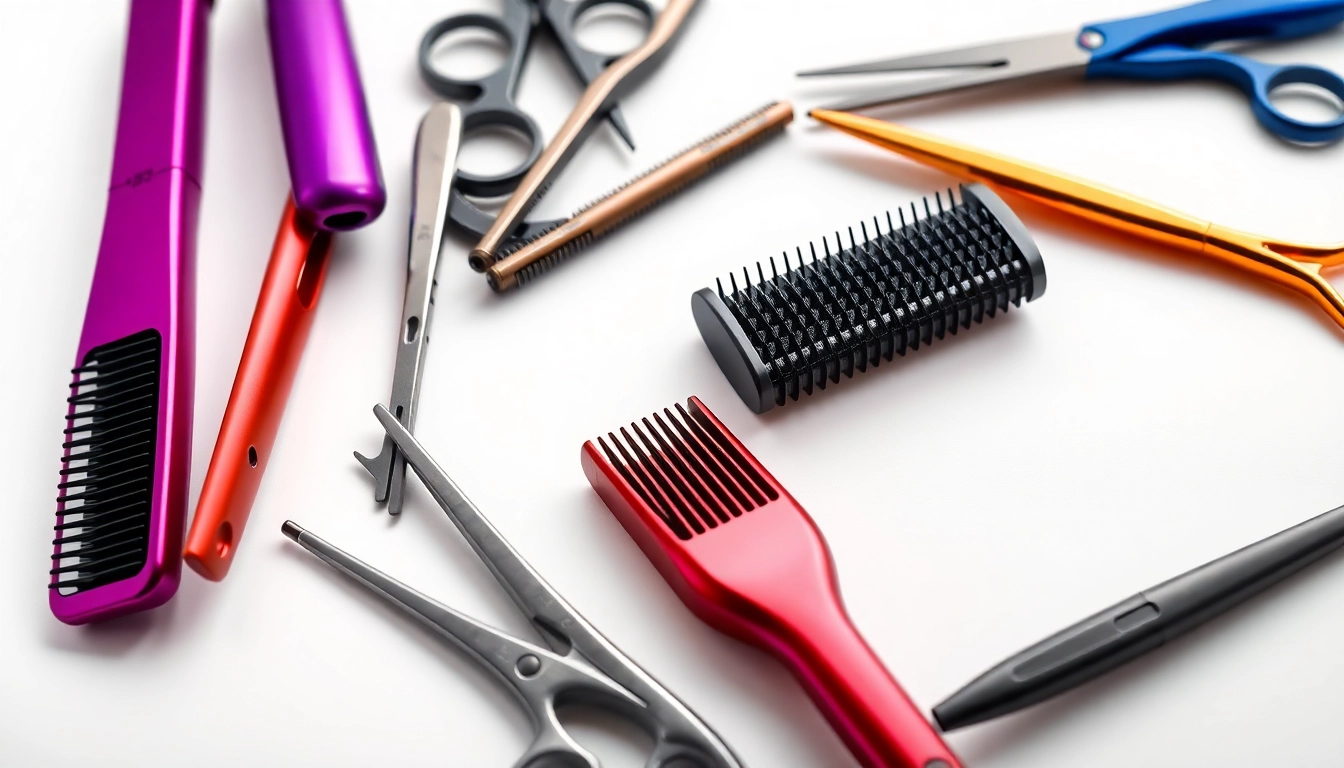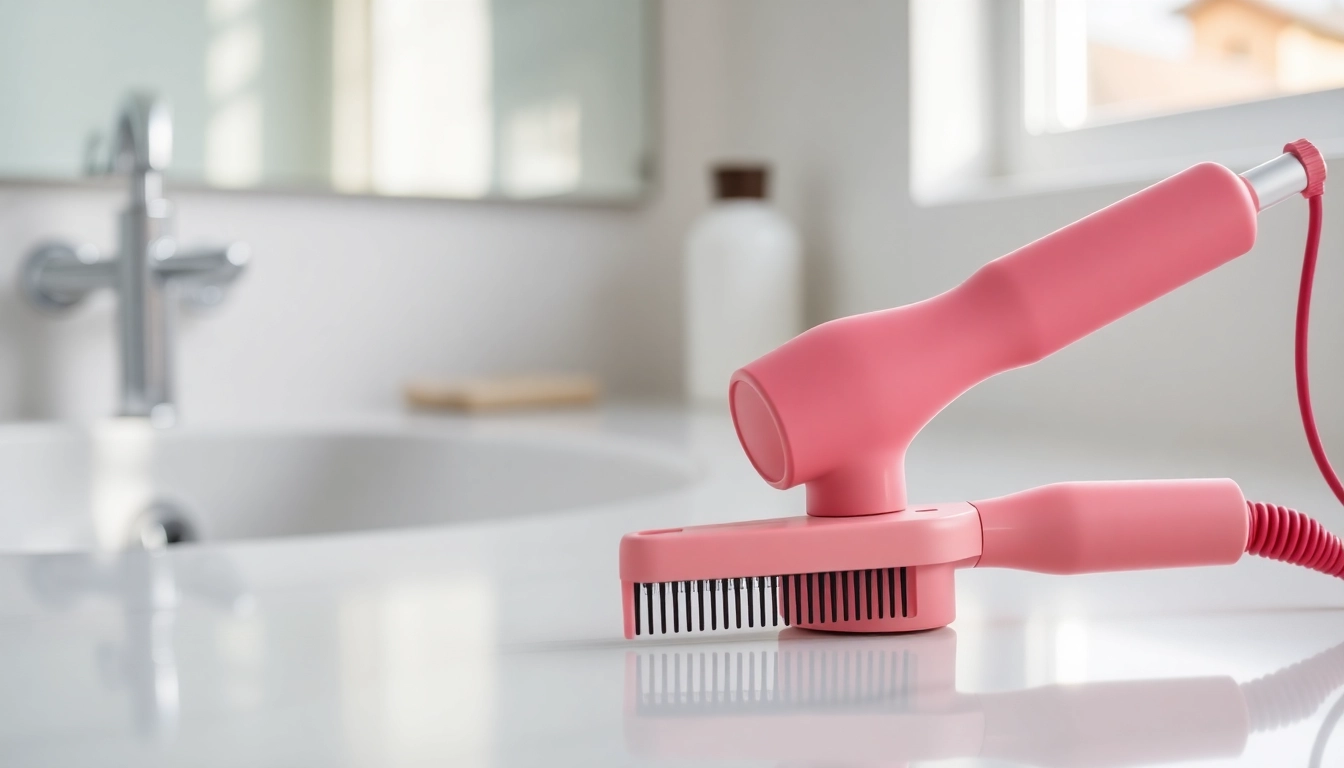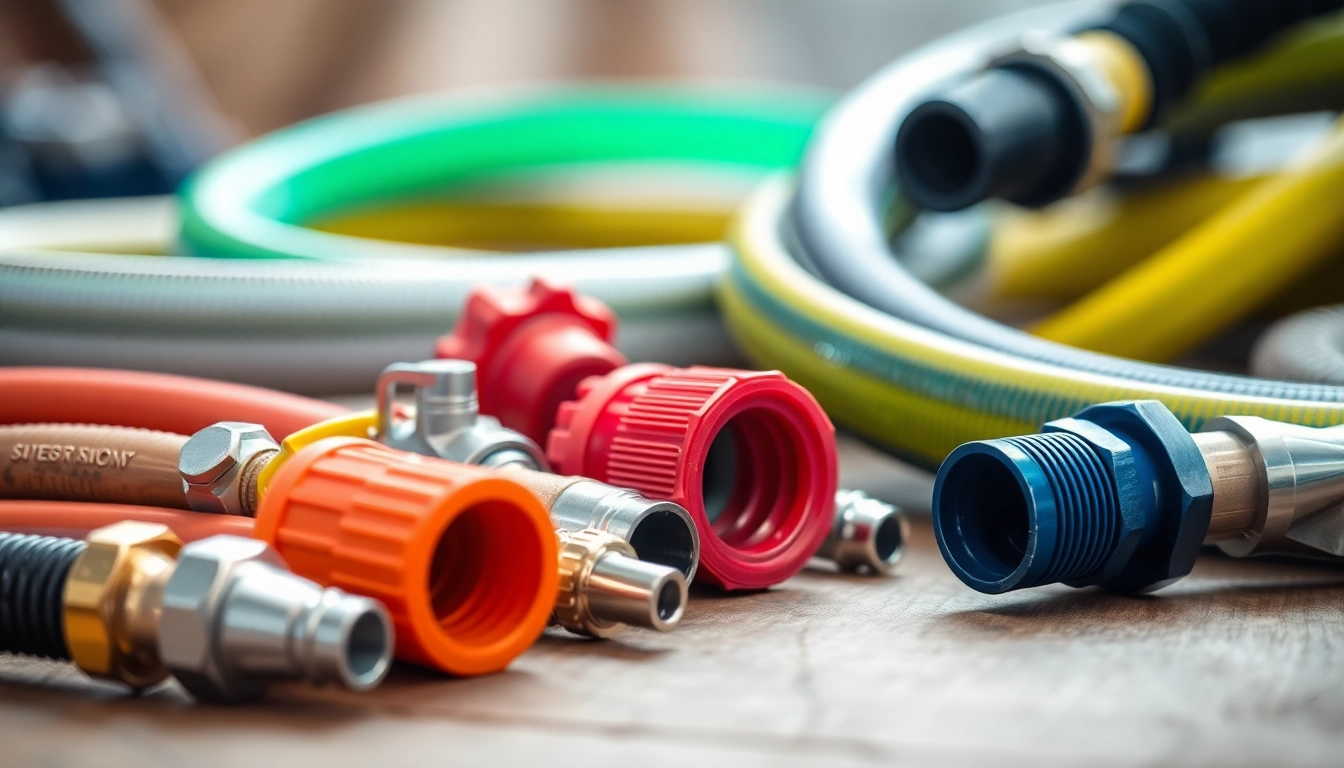Understanding Hairdressing Tools
Introduction to Essential Tools
For professionals in the beauty industry, having the right hairdressing tools is crucial for achieving stellar results. These tools not only enhance the quality of work but also improve the efficiency of the styling process, allowing professionals to cater to diverse client needs effectively. Understanding the range of tools available and their specific applications can significantly impact a stylist’s ability to create stunning looks.
Categories of Hairdressing Tools
Hairdressing tools can be broadly categorized into three main types: cutting tools, styling tools, and finishing tools. Each category serves a distinct purpose and is vital for different stages of the hairdressing process.
- Cutting Tools: This category includes scissors, shears, and razors. These are essential for removing length, adding texture, and shaping hairstyles.
- Styling Tools: Here, we find tools like hairdryers, curling irons, and flat irons. These tools help in shaping and setting the hair in various styles.
- Finishing Tools: These are used to refine the finished look, including brushes, combs, and finishing products to enhance the hairstyle.
Choosing the Right Tools for Your Needs
Selecting the appropriate tools involves considering factors such as hair type, desired styles, and personal skill level. For instance, a stylist working primarily with textured or curly hair may need wider-toothed combs and specialized cutting shears, while someone focusing on sleek, straight styles might prioritize high-quality flat irons and smooth brushes. Additionally, investing in ergonomic designs can decrease fatigue during long working hours.
Must-Have Hairdressing Tools
Professional Shears and Scissors
Shears and scissors are the cornerstones of any stylist’s toolkit. Professional-grade shears are usually made from high-quality steel, ensuring a clean cut and longevity. The variety in shears, such as blunt-cut scissors, thinning shears, and texturizing shears, allows stylists to create diverse hairstyles.
Specialized cutting shears, like those specifically designed for wet or dry cutting, offer greater versatility and precision. It’s crucial for stylists to prioritize comfort and fit when selecting shears to reduce strain on the wrist and hand during use.
Heat Tools: Irons, Curlers, and Dryers
Heat tools are vital in transforming hairstyles. Hairdryers come in various types, including ionic, ceramic, and tourmaline models, which cater to different hair types and desired outcomes. For instance, ionic hairdryers reduce drying time while minimizing frizz, making them ideal for thick or curly hair.
Curling irons and flat irons are also must-haves. They provide an array of options for styling, from tight curls to sleek straight looks. Choosing tools with adjustable heat settings is essential for preventing heat damage on fragile hair types.
Brushes, Combs, and Their Importance
The correct brushes and combs can make a substantial difference in styling results. Wide-toothed combs are excellent for detangling without damaging hair, while vented brushes allow better airflow for faster drying. A round brush is invaluable when blow-drying for volume and curl.
Investing in tools suited to specific hair textures—like boar bristle brushes for fine hair to distribute natural oils, or paddle brushes for long, straight hair—can enhance styling efficiency and results.
Caring for Your Hairdressing Tools
Maintenance Tips for Longevity
Proper maintenance of hairdressing tools is essential for optimal performance and longevity. Regular cleaning after each use helps prevent product buildup that can hinder functionality. For shears, wiping the blades with a microfiber cloth removes hair product and prevents corrosion.
It’s also wise to periodically oil the pivot point of scissors to ensure smooth operation. For heated tools, cleaning the plates or barrels after use will ensure their integrity and longevity.
Cleaning Procedures for Various Tools
Each tool has specific cleaning requirements:
- Scissors and Shears: Use a microfiber cloth to wipe clean, followed by a drop of oil to maintain smooth closure.
- Brushes: Remove hair strands, then wash in warm, soapy water and leave to dry upside down.
- Heat Tools: Ensure they are unplugged and cooled down before wiping down with a damp cloth to remove product residue.
Storage Solutions for Optimal Safety
Storing tools properly minimizes damage and ensures they are easily accessible. Using tool rolls or dedicated storage cases for shears can prevent blade dullness. Heat-resistant mats made from materials like silicone can protect surfaces and tools when cooling.
Additionally, organizing tools in a way that minimizes clutter helps in practice, enhancing workflow efficiency during busy salon hours.
Advanced Hairdressing Tools
Innovative Equipment for Professionals
The latest advancements in hairdressing tools focus on technology that enhances styling performance. For example, smart hair tools with temperature control sensors help prevent heat damage by maintaining an optimal temperature for specific hair types.
Semi-automated tools, such as auto curling wands and digital hair straighteners, allow for effortless styling, enabling stylists to work quicker and more effectively.
Latest Trends in Hairdressing Tools
The hairdressing industry is continually evolving, with trends focusing on eco-friendliness, efficiency, and versatility. For instance, tools made from sustainable materials or those designed for energy efficiency are gaining popularity. Furthermore, multi-functional tools that can serve multiple styling purposes are becoming essential in modern salons.
Integrating Technology into Hairdressing
Technology continues to play a significant role in hairdressing, with professional tools being designed to interface with apps for tutorial guidance or temperature control. High-tech mirrors with built-in displays allow stylists to show clients potential looks or color options digitally.
Moreover, online tutorials and virtual training using augmented reality have made it easier for professionals to perfect their skills and get familiarized with new tools.
Buying Guide for Hairdressing Tools
Where to Find Quality Tools
When searching for quality hairdressing tools, it’s important to select reputable suppliers and manufacturers that have established warranties and customer service. Salons often rely on specialty beauty supply stores or professional-focused online marketplaces that maintain a comprehensive selection of tools catered to various needs.
Additionally, attending beauty expos can provide firsthand experience with the latest products and direct access to experts in the field.
Budgeting for Professional Equipment
Budgeting effectively is crucial for any stylist looking to invest in high-quality tools. High-end tools may offer superior performance and longevity, but there are affordable alternatives designed for aspiring stylists. Budget consideration should include not only the initial purchase but also ongoing maintenance costs.
Setting aside a dedicated budget for tools annually allows stylists to replace, upgrade, or expand their kit in line with emerging trends.
Understanding Ergonomics in Tool Selection
Ergonomics should be a primary consideration when selecting hairdressing tools. Tools designed with user comfort in mind reduce the risk of repetitive strain injuries, allowing stylists to work longer without discomfort. Look for handles that provide a secure grip and balanced weight to minimize fatigue.
Investing in ergonomic designs often leads to improved performance, ultimately benefiting both stylist and client through a more enjoyable styling experience.


